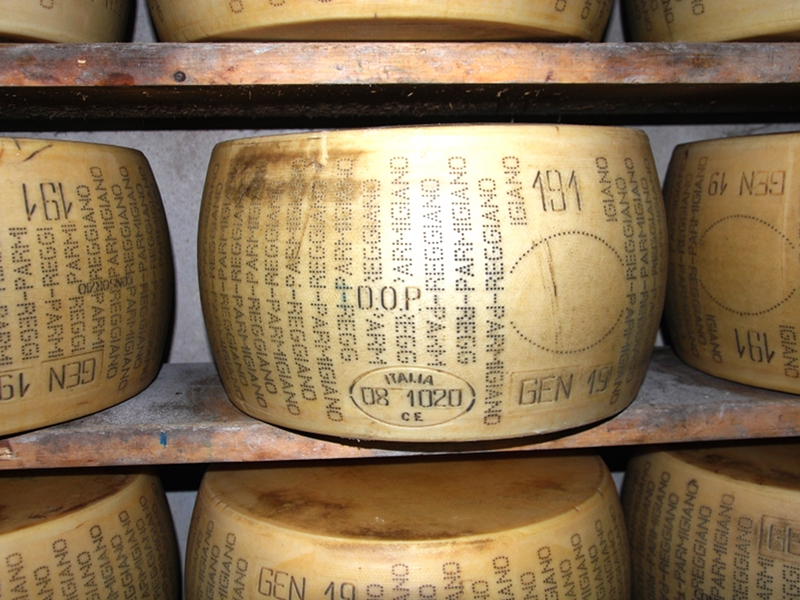Parmigiano Reggiano PDO
Parmigiano Reggiano, one of the most renowned and important cheese of our Country, boasts at least eight centuries of history. It was originally produced in the territory of Modena. It obtained the Protected Designation of Origin in 1996 and, also for this reason, its production must respect strict specifications regarding cattle breeding and fodder in order to guarantee the organoleptic and health features of milk. The production method used by the Benedictine monks has been maintained till present times: the milk obtained from the evening milking, partially skimmed through the rising of the cream, is added to the morning milking in big copper boilers, whey-inoculated, and coagulated with natural calf's rennet. Afterwards, the curd is broken into corn grain-size lumps and, always mixing, gradually heated to 56°C to provoke dehydration. The lumps settle on the bottom and form a big mass: the latter gets lifted with a wooden shovel, gathered in a linen cloth, cut into two parts, and put into the molds. After being turned over several times, when the mold is dry, it is pickled for 20/24 days. After pickling, the molds mature in cool and wet places, on wooden boards, where they are often turned over and brushed. After one year, the cheese must be tested and, if it passes the selection, it is branded and sold. A round of Parmigiano Reggiano is prepared with about six quintals of milk and weights from 36 to 40 kilos. According to the law, the minimum maturation period is 12 months, but usually the cheese is not sold before 18 months: the market appreciate even longer maturation periods: 24, 30, 36 months or over.







